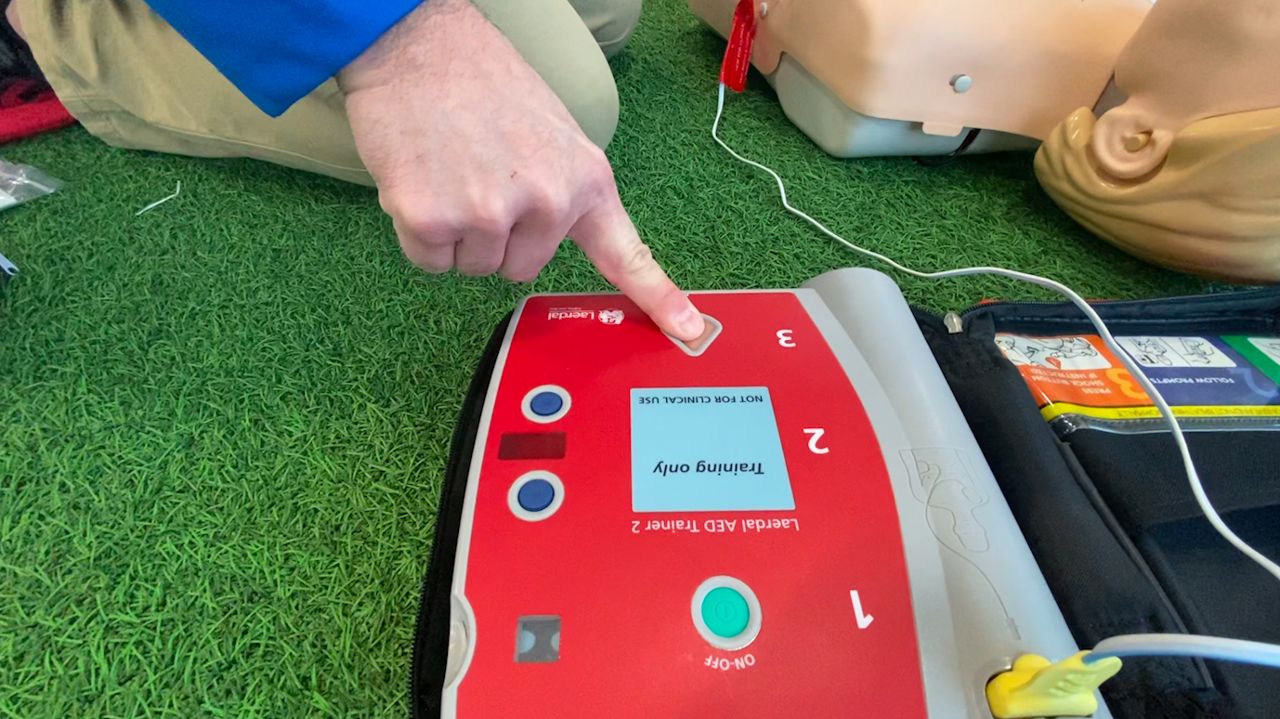ASHWAUBENON, Wis. — Roland Schmidt carries an automatic external defibrillator with him everywhere he goes.
The licensed athletic trainer for Bellin Health Sports Medicine said it’s something he hopes he never uses.
“Every event we have, every practice we have, the AED comes with me. It’s our emergency bag we carry everywhere I go,” Schmidt said. “That emergency bag includes my AED. All of the ventilation tools that are in that AED kit along with all of diabetic supplies, stop-the-bleed supplies and all those other things.”
Sideline medical staff and their tools were highlighted Monday night when Buffalo Bills safety Damar Hamlin collapsed on the field following a hit to the chest. The AED helps resotre normal heart rythms.

Athletic trainers, such as Schmidt, are a staple at some schools, providing medical help for everything from minor cuts and bruises to more serious injuries like broken bones and spinal injuries.
Schmidt said he meets with other medical staff, officials and sometimes coaches before each game to go over emergency plans.
While it may look like he’s watching the game as a fan, he said he sees the playing field through a whole different lens.
“I’m watching for injuries. I’m watching for the mechanism of injury,” he said. “How did someone get hit? How did that tackle occur? How did that person get rolled up on? How did they fall? How did they collapse? Did they hit their head when they collapsed? Was there an indication prior to them falling or collapsing that makes me think something more severe is going on?"
The United School District of De Pere works with athletic trainers from Aurora Health Care. Athletics Director Jeff Byczek said they’re an integral part of the program.
“They’re like part of our coaching staff. They’re as necessary a part of it as any coach we have,” he said. “There are the emergency situations but also trying to help the kids get healthy and stay healthy.”
The hours the trainers put in aren’t lost on Byczek.
“It’s an incredible amount of hours and time that an athletic trainer puts in. It’s like a coach except for it’s year round,” he said. “They’re here for spring, winter fall, practices, games. They’re around constantly.”
Schmidt watched the medical response during the Monday night Bills-Bengals game. He said it made him reflect on what he saw and why he does what he does.
“I think what keeps me coming back is knowing that I’m there to help protect the student-athlete. I’m there to help protect the general public in those situations,” he said. “I’m the person with the most training and I’m the person who has the most skill and ability to respond quickly to that emergency situation.”



